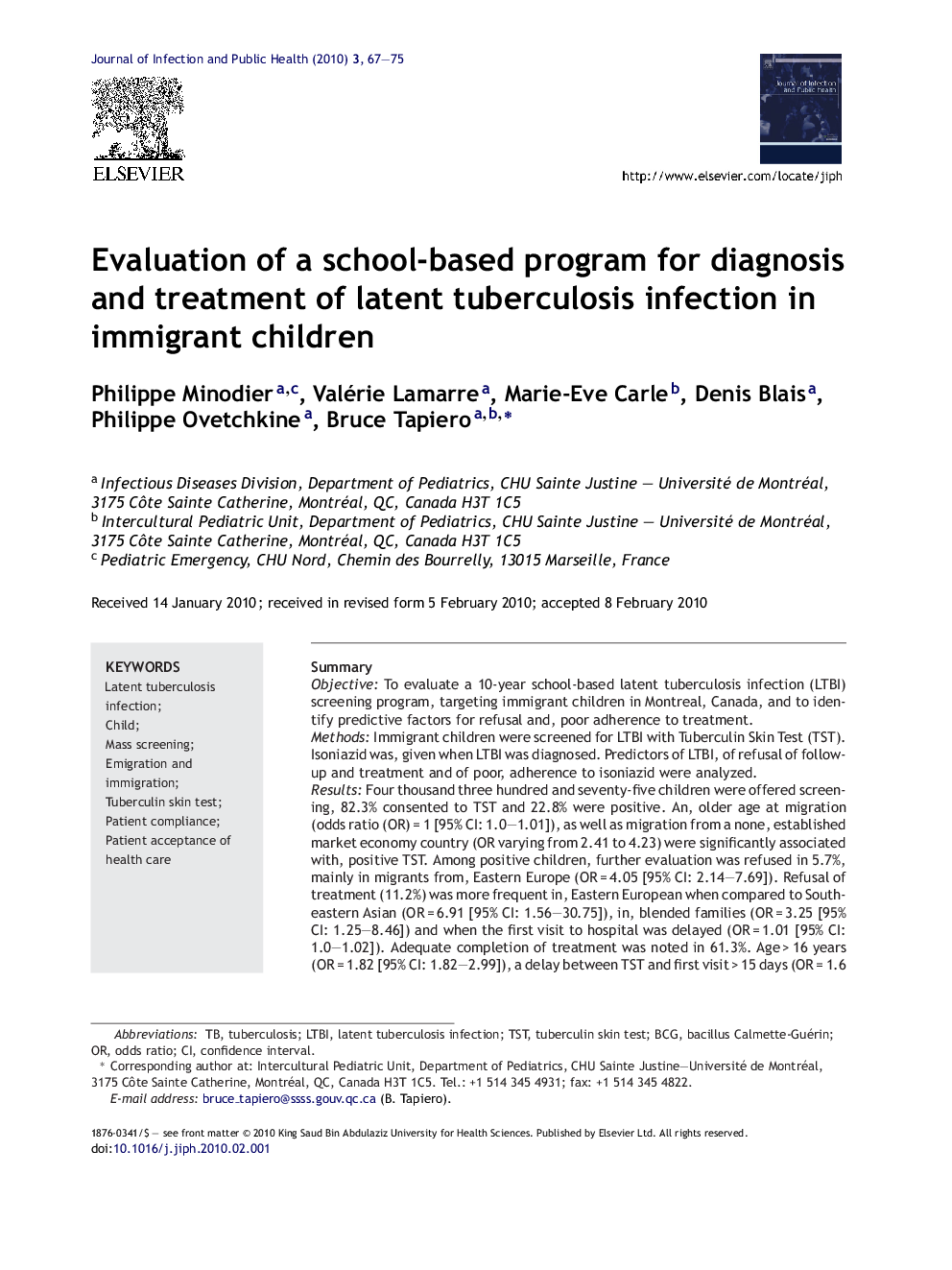| Article ID | Journal | Published Year | Pages | File Type |
|---|---|---|---|---|
| 3406282 | Journal of Infection and Public Health | 2010 | 9 Pages |
SummaryObjectiveTo evaluate a 10-year school-based latent tuberculosis infection (LTBI) screening program, targeting immigrant children in Montreal, Canada, and to identify predictive factors for refusal and, poor adherence to treatment.MethodsImmigrant children were screened for LTBI with Tuberculin Skin Test (TST). Isoniazid was, given when LTBI was diagnosed. Predictors of LTBI, of refusal of follow-up and treatment and of poor, adherence to isoniazid were analyzed.ResultsFour thousand three hundred and seventy-five children were offered screening, 82.3% consented to TST and 22.8% were positive. An, older age at migration (odds ratio (OR) = 1 [95% CI: 1.0–1.01]), as well as migration from a none, established market economy country (OR varying from 2.41 to 4.23) were significantly associated with, positive TST. Among positive children, further evaluation was refused in 5.7%, mainly in migrants from, Eastern Europe (OR = 4.05 [95% CI: 2.14–7.69]). Refusal of treatment (11.2%) was more frequent in, Eastern European when compared to South-eastern Asian (OR = 6.91 [95% CI: 1.56–30.75]), in, blended families (OR = 3.25 [95% CI: 1.25–8.46]) and when the first visit to hospital was delayed (OR = 1.01 [95% CI: 1.0–1.02]). Adequate completion of treatment was noted in 61.3%. Age > 16 years (OR = 1.82 [95% CI: 1.82–2.99]), a delay between TST and first visit > 15 days (OR = 1.6 [95% CI: 1.12–2.28]), as well as the presence of relative > 18 years in the household (OR = 1.56 [95% CI: 1.0–2.43]), were associated with poor adherence to treatment.ConclusionSociocultural and behavioural factors are involved in acceptance of LTBI treatment in, immigrant children. Adherence to treatment is challenging and requires comperhension of sociocultural beliefs and accessibility to TB clinic.
